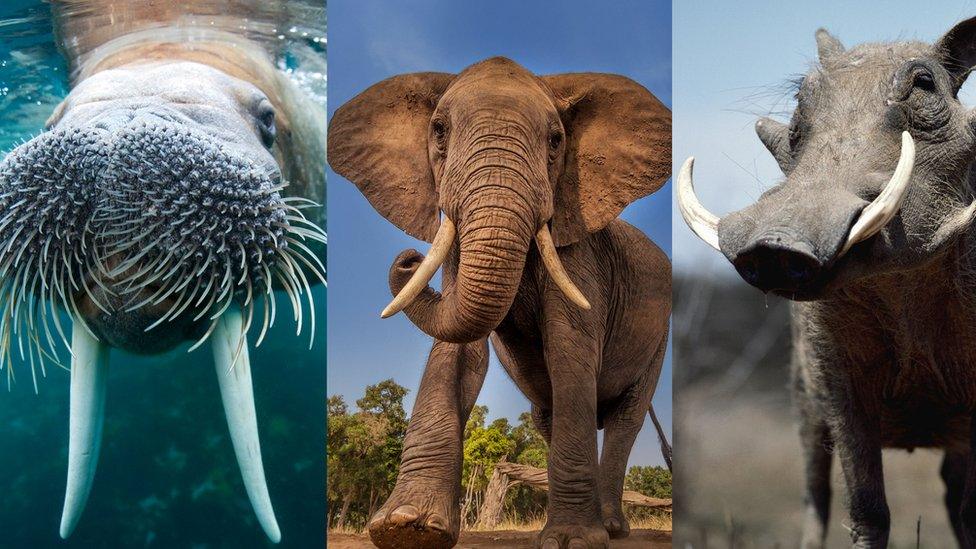Where did tusks come from? Why do only some animals have them?
- Published
- comments

Scientists think they might have found the first creature to have tusks, and it's pretty weird...
From elephants to walrus, lots of the creatures we're familiar with today have tusks - but did you know that only mammals have tusks?
This is something that piqued the curiosity of a group of researchers from the US who decided to see if they could find the first creature to own a pair of tusks - and they did!
"We were able to show that the first tusks belonged to animals that came before modern mammals, called dicynodonts," said Ken Angielczyk, a curator at Chicago's Field Museum.
"They're very weird animals." he added.
What were dicynodonts like?
An artist's drawing of a dicynodont.
Dicynodonts lived around 270-201 million years ago, before the time of the dinosaurs.
They were unusual looking creatures who belong to an extinct group of relatives called therapsids.
Some species of dicynodont were small like rats, and others were as big as elephants!
Despite being closely related to mammals, dicynodonts looked more like reptiles, and had turtle-like beaks with a pair of tusks sticking out of their top jaw.
Their name even means "two dog teeth."
What's the difference between tusks and teeth?
The researchers decided that in order to work out which creature had the first tusks, they had to first define the difference between teeth and tusks.
In their study they set out three rules to help define the difference:
A true tusk, must keep growing throughout an animal's life.
Tusks must only be made from dentine, and not coated in protective enamel (like teeth).
A tusk must grow from the animal's mouth, and be held in place by a ligament (to help them handle the occasional knock and bash).
The researchers then looked at ultra-thin samples from 19 fossilised dicynodont tusks, taken from 10 different species, which were found in South Africa, Antarctica, Zambia and Tanzania.
What did they find?
They found that only some of the dicynodonts had true tusks, whilst the rest just had big teeth.
They also discovered that different species of the dicynodont family evolved tusks at different times, and some never evolved them at all.
"I kind of expected there to be one point in the family tree where all the dicynodonts started having tusks, so I thought it was pretty shocking that we actually see tusks evolve convergently," said Megan Whitney, a researcher at Harvard University and the lead author of the study.
"It all ladders up to giving us a better understanding of the tusks we see in mammals today," said Ken Angielczyk, speaking about the research.
The researchers shared their findings in a study published in the journal Proceedings of the Royal Society B: Biological Sciences, and hope it will help scientists to better understand how evolution works.
- Published23 October 2021
- Published17 March 2020
- Published18 March 2020
